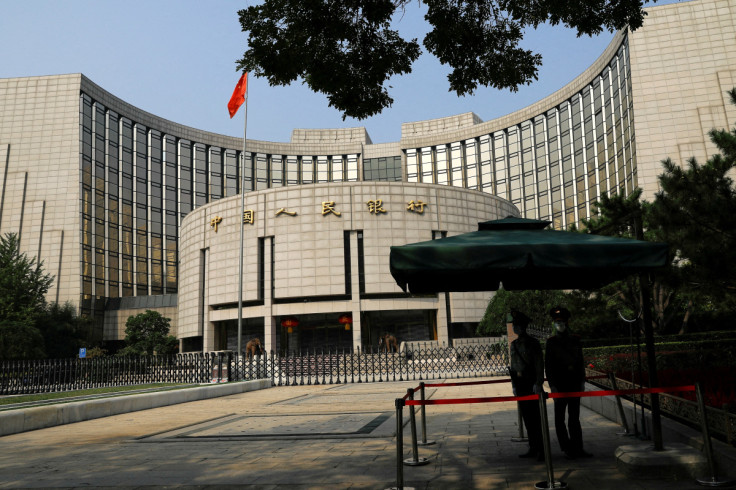China Cuts Banks' Reserve Ratio For First Time In 2023 To Support Recovery

China's central bank said on Friday it would cut the amount of cash that banks must hold as reserves for the first time this year to help keep liquidity ample and support a nascent economic recovery.
Chinese leaders have pledged to step up support for the world's second-largest economy, which is gradually rebounding from a pandemic-induced slump after virus curbs were abruptly lifted in December.
The People's Bank of China (PBOC) said it would cut the reserve requirement ratio (RRR) for all banks, except those that have implemented a 5% reserve ratio, by 25 basis points (bps), effective March 27.
The move, which came earlier than financial markets had anticipated, comes after data showed a gradual but uneven recovery in the economy in the first two months of the year, and stronger-than-expected credit expansion.
"Policymakers wish to maintain the economic momentum," said Zhou Hao, economist at Guotai Junan International.
The central bank has yet to give an estimate of how much long-term liquidity will be released from the cut, which will allow banks to lend out more funds.
Bruce Pang, chief economist at Jones Lang Lasalle, estimated that the move freed up about 600 billion yuan ($87.08 billion).
The central bank has promised to make its policy "precise and forceful" this year to support the economy, keeping liquidity reasonably ample and lowering funding costs for businesses.
It said the cut reflected its intention to "make a good combination of macro policies, improve the level of services for the real economy, and keep liquidity reasonably sufficient in the banking system."
The reduction follows a 25-bps cut for all banks in December, which released about 500 billion yuan in liquidity.
"EFFECTIVE TOOL"
Central bank chief Yi Gang told a news conference on March 3 that China's real interest rates are at an appropriate level and cutting banks' reserve requirements will still be an effective tool to support the economy.
The PBOC has cut the RRR 15 times since 2018, from nearly 15%, and some analysts have speculated on how much room it has for further reductions.
"This will provide a bit of financial relief for China's large and medium-sized banks," Julian Evans-Pritchard at Capital Economics said in a note.
"It may also help nudge down lending rates slightly. But given the wider signs of policy restraint, we doubt it will have a significant and lasting impact on monetary conditions or credit growth."
The weighted average RRR for financial institutions stood at around 7.6% after the cut, the central bank said.
China's economic activity picked up in the first two months of 2023 as consumption and infrastructure investment drove a recovery from COVID-19 disruptions, but its other traditional growth engines are a big question mark: exports are expected to remain weak amid a global downturn and the crisis-hit property sector is only slowly beginning to turn the corner.
China has set a modest target for economic growth this year of around 5% after it cooled to only 3% last year, one of the weakest showings in nearly half a century.
($1 = 6.8903 Chinese yuan renminbi)
© Copyright Thomson Reuters {{Year}}. All rights reserved.




















